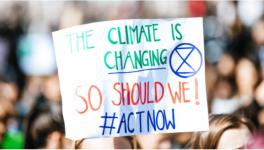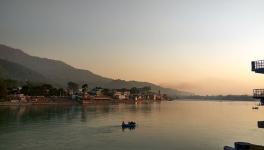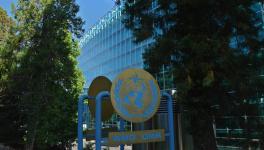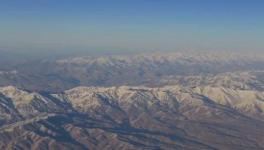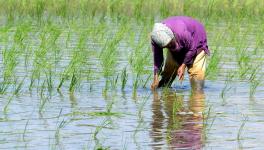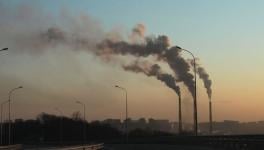‘Sacrifice Zones’: The New ‘Jim Crow’ That’s Sickening and Killing People of Colour in US
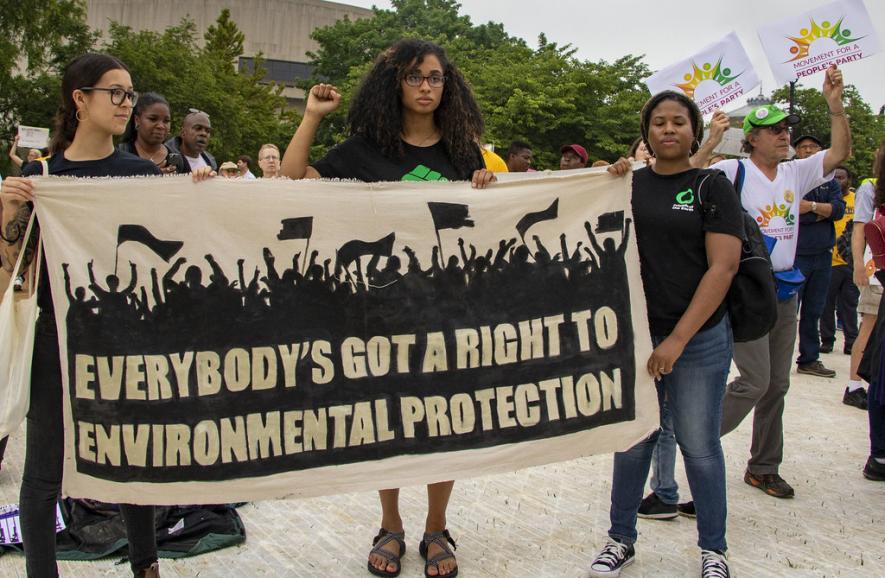
Image for representational purpose. Credit: Salud America.
The Black Lives Matter movement and the COVID-19 pandemic have highlighted how systemic racism disproportionately places danger and harm on low-income and minority populations. One harsh reality of this systemic racism is the existence of “sacrifice zones”: Communities located near pollution hot spots that have been permanently impaired by intensive and concentrated industrial activity, such as factories, chemical plants, power plants, oil and gas refineries, landfills, and factory farms.
As noted by the Climate Reality Project, an environmental non-profit based in Washington, D.C., “These areas are called ‘sacrifice zones’ because the health and safety of people in these communities [are] being effectively sacrificed for the economic gains and prosperity of others.”
Designated by corporations and policymakers, these areas are a product of environmental racism: the systemic social, economic, and political structures—including weak laws, lack of enforcement, corporate negligence, and limited access to health care—that place disproportionate environmental health burdens on specific communities based on race and ethnicity.
Because people of colour and low-income groups in the United States are most likely to live in sacrifice zones, they breathe polluted air, drink contaminated water, and are exposed to a variety of toxic chemicals and particulate matter.
More than 50 percent of residents who live near hazardous waste are people of colour, with Black Americans 75 percent more likely to live near these sites. Considering these facts, it is no surprise that communities of colour have a higher chance of dying from environmental causes than white people.
“Thirty-nine percent of the people living near coal-fired power plants are people of colour, so what’s absolutely true is that there are a disproportionate number of people of colour living next to these plants,” then-senior director of the environmental and climate justice programme at the NAACP, Jacqueline Patterson, told Yale Environment 360 in June 2013.
Speaking after the release of an NAACP report on the disproportionate effects of coal-fired plants on minorities, Patterson further added that “[s]eventy-eight percent of African Americans live within 30 miles of a coal-fired power plant. We also discovered that Latino communities, as well as Indigenous communities and low-income communities, are more likely to live next to coal-fired plants.”
Entrenched Inequity
Sacrifice zones are a consequence of an “extractive development model” supported by self-serving government officials who want to create job and income opportunities provided by polluting industries rather than avoiding irreversible damage caused by these industries to communities of colour.
“Sacrifice zones are the result of many deeply rooted inequities in our society. One of these inequities takes the form of unwise (or biased) land use decisions, dictated by local or state officials, intent on attracting big industries to the town, county, or state, in an effort to create jobs and raise tax revenues,” wrote Steve Lerner in his 2012 book Sacrifice Zones: The Front Lines of Toxic Chemical Exposure in the United States.
“When decisions are made about where to locate heavily polluting industries, they often end up sited in low-income communities of color where people are so busy trying to survive that they have little time to protest the building of a plant next door. Those who make the land use decisions that govern sacrifice zones typically designate these areas as residential/industrial areas, a particularly pernicious type of zoning ordinance.”
“In these areas, industrial facilities and residential homes are built side by side, and few localities have adequate buffer zone regulations to provide breathing room between heavy industries and residential areas,” Lerner continued.
The polluting environment results in an increased prevalence of health problems among residents living near heavy industries. “The health impact of this patently unwise zoning formula is predictable: [R]esidents along the fenceline with heavy industry often experience elevated rates of respiratory disease, cancer, reproductive disorders, birth defects, learning disabilities, psychiatric disorders, eye problems, headaches, nosebleeds, skin rashes, and early death. In effect, the health of these Americans is sacrificed, or, more precisely, their health is not protected to the same degree as citizens who can afford to live in exclusively residential neighborhoods,” stated the book.
The Center for Health, Environment & Justice, a non-profit environmental activism group based in Falls Church, Virginia, asserted that “[d]ue to redlining, low property values, and other social factors, these communities have historically consisted of [low-income] and/or minority populations.”
The group pointed out that “federal air policies regulate facility emissions one stack at a time and one chemical at a time. Impacted communities, however, are exposed to the cumulative impact of multiple pollutants released over an extended period of time from a cluster of facilities.”
Executive Action
President Joe Biden has made environmental justice a priority in his administration, issuing an executive order on how to tackle climate change on January 20, 2021, his first day in office. In the order, Biden directed the federal government to “advance environmental justice” where agencies “failed to meet that commitment in the past.”
On January 27, 2021, Biden signed another executive order that created a White House Environmental Justice Advisory Council to address the environmental impacts of systemic racism specifically. “We must deliver environmental justice in communities all across America,” the order said. “To secure an equitable economic future, the United States must ensure that environmental and economic justice are key considerations in how we govern.”
A separate executive order directed federal agencies to prioritise racial equity in their work, which incorporates racial and environmental justice across the federal government. However, without congressional action on the legislative front, another president could reverse these orders.
Biden’s $2 trillion bipartisan infrastructure plan includes provisions that address longstanding racial inequities, including “$20 billion to ‘reconnect’ communities of color to economic opportunity.” In addition, the proposal provides for funds to replace lead water pipes that have harmed communities of colour in cities like Flint, Michigan, and to clean up environmental hazards that have harmed Hispanic and tribal communities.
Launched in January 2021, Biden’s Justice40 Initiative encompasses 146 programmes within the Department of Energy (DOE)—far more than any other federal department. Together, these programmes instruct the DOE to make decisions and fund renewable and fossil fuel projects with the consideration of how they will affect historically disadvantaged communities.
“We at the Department of Energy historically have done a terrible job, honestly,” said Energy Secretary Jennifer Granholm at Greentown Labs, a Houston incubator for startups, in March 2023. “Only 1 percent of funding has gone to small, minority, and disadvantaged businesses.” She added, “We have had these structural inequalities, inequities in the past, and we’re trying to remedy that through embedding sort of structural equity into these programs.”
“We’ll create good jobs for millions of Americans… and we’ll do it all to withstand the devastating effects of climate change and promote environmental justice,” Biden said in his 2022 State of the Union address.
Progress at the federal level has been slow, even though the executive branch has been aware of the systemic issues for decades. In a 2004 report, the U.S. Environmental Protection Agency (EPA) said that “the solution to unequal protection lies in the realm of environmental justice for all Americans. No community, rich or poor, [B]lack or white, should be allowed to become a ‘sacrifice zone,’” while quoting Robert D. Bullard, who was then a professor at Clark Atlanta University.
On April 21, 2023, President Biden signed an executive order directing all federal agencies to work toward “environmental justice for all” and improve the lives of communities across the nation that have been most impacted by climate change and toxic pollution. The order established a new White House Office of Environmental Justice to coordinate revitalised efforts across the government meant to achieve environmental justice.
“For far too long, communities across our country have faced persistent environmental injustice through toxic pollution, underinvestment in infrastructure and critical services, and other disproportionate environmental harms often due to a legacy of racial discrimination including redlining. These communities with environmental justice concerns face even greater burdens due to climate change,” the April 21 order stated.
Kristine Stratton, president and CEO of the National Recreation and Park Association (NRPA), praised the order. “NRPA commends the Biden administration for its action that prioritizes a renewed commitment to the climate, ensuring healthy communities and environmental resilience for all,” Stratton said in a press statement.
“We are thrilled to learn of the establishment of the Office of Environmental Justice at the White House, to help coordinate efforts toward protecting vulnerable communities impacted by environmental injustice. We must ensure all people benefit from spaces that are not only resilient and regenerative but also transformative at the community level.”
Criticism of Federal Regulation
In an opinion piece published by the Houston Chronicle on April 2, 2023, Robert D. Bullard, the founding director of the Bullard Center for Environmental and Climate Justice, criticised federal regulators for paying lip service to impacted communities of colour. He wrote: “Communities of colour and low-income communities have long felt the adverse impacts of the fossil fuel industry and the climate crisis it caused, but most of those communities didn’t have a seat at the environmental justice roundtable,” referring to a March 2023 meeting of stakeholders organised by the Federal Energy Regulatory Commission (FERC) “to better incorporate environmental justice and equity considerations into its decisions.”
Bullard pointed out that FERC—an independent federal agency within the Department of Energy that regulates the interstate transmission of electricity, gas, and oil, as well as natural gas terminals and hydropower projects—has approved “roughly 20 new or expanded gas export terminals… slated to come online in communities across the Gulf Coast within the next decade.”
These projects will only worsen the already heavily polluted, hazardous, and unhealthy region known as “Cancer Alley” (named for the region’s elevated cancer rates) for the minority groups living in these fenceline communities.
Using data processing software and Environmental Protection Agency modelling tool, ProPublica mapped the spread of cancer-causing chemicals from various sources throughout the US between 2014 and 2018. It found that areas where a majority of the residents were people of colour experienced 40 percent “more cancer-causing industrial air pollution on average than tracts where the residents are mostly white.”
“The commission [FERC] offers little more than pleasantries with regard to justice and equity as it races to approve more polluting facilities in Black, Indigenous, Latino, and other communities of color across the country. Nothing has changed. Our communities are still being sacrificed,” wrote Bullard.
According to him, if FERC’s actions were truly fair and equitable, then the farce of holding an environmental justice roundtable wouldn’t be needed, and the commission would not be approving export gas projects if it were actually serious about mitigating the negative ecological impacts suffered by the BIPOC communities as a result of these projects.
Calls for Legislation
On April 6, 2021, the Hip Hop Caucus, a nonprofit advocacy group that tackles issues relating to health care, education, and environmental and social justice, launched a public petition urging Congress to pass legislation that protects communities of colour from the health risks posed by environmental degradation.
The petition is co-sponsored by several other advocacy groups, including Progress America, Friends of the Earth Action, Coalition on Human Needs, Evergreen Action, and Progressive Reform Network. “Corporate polluters demand human sacrifices,” wrote Mike Phelan, a spokesman for Progress America, in an email about the petition sent on April 3, 2021. “They each have a choice between profits and pollution―and every time, they choose profits.”
In her 2014 book This Changes Everything, Naomi Klein wrote about sacrifice zones, stating that “running an economy on energy sources that release poisons as an unavoidable part of their extraction and refining has always required sacrifice zones—whole subsets of humanity categorized as less than fully human, which made their poisoning in the name of progress somehow acceptable.”
Natural Disasters Increase Racial Inequality
Natural disasters like earthquakes and those tied to climate change, like wildfires, floods, and hurricanes, actually increase racial inequality.
A 2018 study by sociologists Junia Howell of the University of Pittsburgh and James R. Elliott of Rice University in Houston, Texas, found that white Americans who experience disaster accumulate significantly more wealth than any other group after experiencing a natural disaster.
“If you’re white, over time, you’re actually going to accumulate more than if you never had that disaster in the first place. But for [B]lack people, for Latinos, for Asians—it’s not true,” said Howell to LAist.
Ironically, while people of colour are more likely to experience the negative impacts of climate change, they support and participate in climate action more than white people.
Environmental Racism: Clear and Present Danger
In 2018, scientists at the EPA’s National Center for Environmental Assessment released a study in the American Journal of Public Health (AJPH) called “Disparities in Distribution of Particulate Matter Emission Sources by Race and Poverty Status.” The report confirmed that environmental racism presents a clear and present danger to people of colour across the United States, as they are much more likely to live near polluters.
The study found that poor communities (those living below the poverty line) have a 35 percent higher burden from particulate matter emissions than the overall US population. The health burden carried by non-whites was 28 percent higher than the overall population, while African Americans had a 54 percent higher burden. The researchers cited economic inequality and historic racism as significant factors that determined the location of facilities emitting particulate pollution.
Particles less than 10 micrometers in diameter that are inhaled can become embedded deep in the lungs and enter the bloodstream. Such particle pollution exposure can cause a number of health impacts, including aggravated asthma, decreased lung function, irregular heartbeat, and heart attacks. For people with heart or lung disease, inhaling these particles can even lead to premature death.
Referring to the study published in the AJPH, then-director of the Environmental Justice Program at the Sierra Club, Leslie Fields said, “This report illustrates how people of colour and people with limited means have been grossly taken advantage of by polluters who don’t care about the misery they cause,” according to a statement issued by the environmental nonprofit in 2018. “The disadvantages that come with those health issues, like missing school, create a cycle of poverty and lack of access to opportunity that spans generations and shapes every part of the experience of being a person of color or low-income person in the United States.”
Examining the study in an article for Colorlines, Ayana Byrd wrote that environmental racism “has been called the new Jim Crow and continues to target Black, Latinx, Native, Asian, and other communities of color, subjecting them to generations of poor health outcomes.”
While executive actions from the White House can help to tackle environmental racism and bring the issue into the national conversation, eliminating the existence of sacrifice zones beyond a presidential term requires strong legislation from local, state, and federal lawmakers.
Reynard Loki is a co-founder of the Observatory, where he is the environment and animal rights editor. He is also a writing fellow at the Independent Media Institute, where he serves as the editor and chief correspondent for Earth | Food | Life. He previously served as the environment, food, and animal rights editor at AlterNet and as a reporter for Justmeans/3BL Media covering sustainability and corporate social responsibility.
SOURCE: Independent Media Institute
This article was produced by Earth | Food | Life, a project of the Independent Media Institute.
Get the latest reports & analysis with people's perspective on Protests, movements & deep analytical videos, discussions of the current affairs in your Telegram app. Subscribe to NewsClick's Telegram channel & get Real-Time updates on stories, as they get published on our website.









